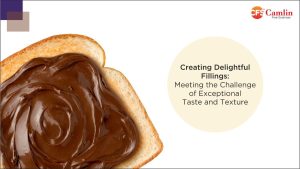
Creating Delightful Fillings: Meeting the Challenge of Exceptional Taste and Texture
Today’s consumers are looking for luxurious fillings with rich flavors and satisfying textures that elevate their indulgent experiences. The demand for high-quality fillings that deliver a memorable mouthfeel has become more prominent, but achieving this balance can be complex. It requires a delicate approach to retain the right texture, release flavors harmoniously, and maintain long-lasting freshness.
From soft and creamy to firm and cooling sensations, these refined fillings have transformed into an indulgence enjoyed daily. When developing confectionery fillings, manufacturers aim to captivate with a range of textures and flavor profiles that meet high sensory expectations. The texture, stability, and overall experience of these fillings depend significantly on the selection and handling of filling fats, their interaction with other ingredients, and the precise processes used in production.
Attaining the perfect filling requires comprehensive knowledge of the intricate elements that influence taste and quality. Each ingredient, particularly fats, plays a fundamental role in the success of the final product, enhancing flavors, textures, and stability.
Solutions for Overcoming Technical Challenges
To navigate the technical challenges involved in producing quality fillings, manufacturers have developed advanced techniques to ensure consistent texture, flavor release, and stability:
- Filling Formulation: Selecting and formulating filling ingredients, including fats, is crucial to achieve desired texture, flavor, and stability. Factors such as melting properties, viscosity, and ingredient compatibility are carefully considered to maintain quality.
- Fat Modification: Manufacturers modify the properties of filling fats through methods like tempering, fractionation, or blending with other fats. These adjustments enhance texture, improve stability, and allow for controlled flavor release, essential for an indulgent experience.
- Process Optimization: Production processes are refined to ensure proper handling, filling, and enrobing. This includes optimizing temperature control, mixing techniques, and production line speeds to consistently achieve the desired sensory attributes.
- Shelf-Life Extension: Packaging and storage techniques are employed to extend the shelf life of fillings while preserving quality. This can involve protective barriers, controlled atmospheres, and specific temperature and humidity conditions.
- Quality Control: Rigorous quality control measures are implemented throughout the production process to ensure consistent results. Regular testing, sensory evaluations, and adherence to strict standards help maintain the desired quality and attributes.
CFS offers a solution for meeting both present and future challenges in crafting delectable, sensory-rich confections. By bringing together functional ingredients at various stages of development, CFS supports manufacturers in achieving the right mouthfeel, texture, and appeal, all with processing ease. This approach empowers the creation of winning products that captivate and delight.
For more details on how CFS can support your specific needs, reach out to us at – ezential@camlinfs.com and visit our website at www.camlinfs.com/ezential/

About the author:
Nishank Pareek serves as the General Manager and Global Category Leader at Camlin Fine Sciences, a prominent manufacturer of antioxidants and provider of functional systems and food ingredients solutions. With more than 18 years of international experience in the food ingredients, emulsifiers, specialty fats, and food processing sectors, he is dedicated to fostering growth, driving innovation, and achieving excellence.








































































































